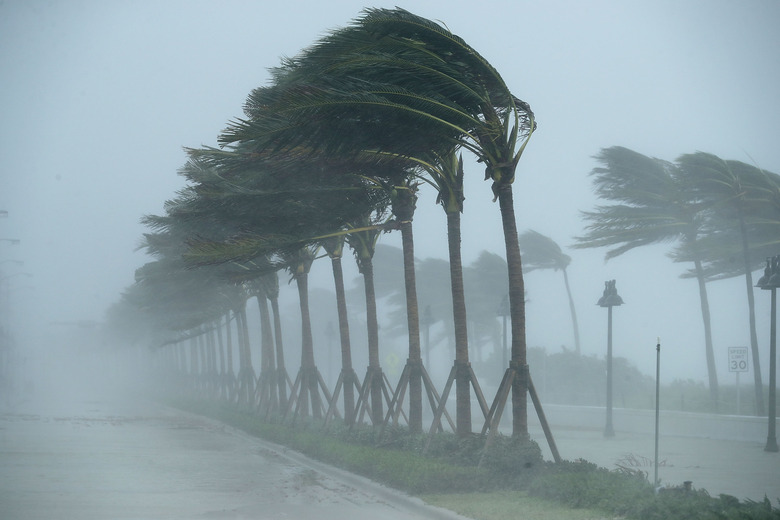Warning Signs For A Hurricane
Hurricane warning signs are not apparent until a hurricane has gotten close to making landfall. A few signs, such as an increase in ocean swell, wave frequency and driving rain, can be seen 36 to 72 hours before a hurricane strikes. Rip tides pushing away from the shoreline can appear as the storm nears. Those who live in areas where hurricanes are likely should create a disaster plan and keep an eye on weather forecasts, particularly during hurricane season, which is June 1 through Nov. 30 in the Atlantic and May 15 through Nov. 30 in the Eastern Pacific region.
Increased Ocean Swell
Increased Ocean Swell
Around 72 hours before a hurricane makes landfall, ocean swell increases to about 2 meters (6 feet) in height. Waves hit the shore about every nine seconds. This is one of the earliest signs of an approaching hurricane. As the hurricane gets closer to land, waves will hit the shore with greater rapidity and increase to close to 5 meters (16 feet) in height.
Barometric Pressure Drop
Barometric Pressure Drop
The barometer begins to drop roughly 36 hours before a hurricane makes landfall, slightly when the hurricane is still 30 hours away and steadily plunging as the storm nears. While some believe a drop in barometric pressure can aggravate arthritis or lead to headaches, the most reliable way to detect a drop in barometric pressure is by checking a barometer. Lower barometric pressure will also cause people to experience lower blood pressure.
Wind Speed
Wind Speed
Wind speed increases as a hurricane gets closer to land, from around 18 kilometers per hour (11 miles per hour) 36 hours before landfall to as high as 167 kilometers per hour (104 miles per hour) one hour before landfall. It's gusty and grows steadily stronger, blowing unsecured items about and removing tree branches.
Heavier Rainfall
Heavier Rainfall
Rain moves in around 18 hours before the hurricane. It's a driving rain that comes through intermittently, worsening the closer the hurricane gets to land, until it becomes a continual downpour around six hours before a hurricane hits. This may lead to flooding in low-lying areas.
Cite This Article
MLA
Stober, Elle. "Warning Signs For A Hurricane" sciencing.com, https://www.sciencing.com/warning-signs-hurricane-7429165/. 19 April 2018.
APA
Stober, Elle. (2018, April 19). Warning Signs For A Hurricane. sciencing.com. Retrieved from https://www.sciencing.com/warning-signs-hurricane-7429165/
Chicago
Stober, Elle. Warning Signs For A Hurricane last modified March 24, 2022. https://www.sciencing.com/warning-signs-hurricane-7429165/
